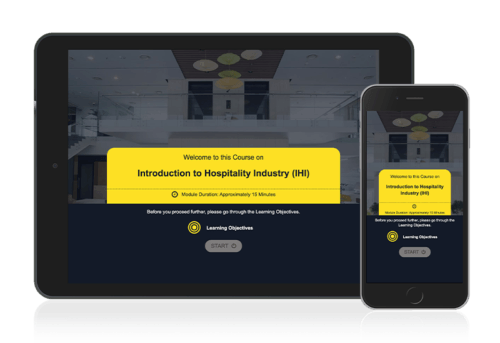Microlearning Training Scenarios With Examples
In one of my previous articles, I mentioned the following about microlearning: Microlearning focused on a specific objective, cutting out all the fluff that is action-oriented or task-oriented, and supporting the primary training or learning journey helps better understand and, therefore, retain concepts. Microlearning that is administered just before an eLearning or VILT session or a few days after the formal training session as a reinforcement of key learnings helps learners remember the concepts.
In the current times that we live in, where remote working or work from home has become the new normal, digital learning has emerged as an essential solution to disseminate information and knowledge. What better than microlearning that can be provided to the learners in regular intervals. Learners are accustomed to virtual classrooms, hence, they would not take too much time or effort to start using digital learning to learn new concepts. Microlearning fits the bill, as it is a short and engaging method of imparting knowledge or information. Microlearning can be presented in various formats, such as videos, quizzes, games, podcasts, or standalone content that can aid in the quick recall of concepts.
Next, I will present 3 training scenarios where microlearning fits well, along with examples.
1. Before The Formal Training
Microlearning can be used as an excellent way to provide information to the learners about what formal training would entail. A microlearning course, for example, can be used as a preparation for the primary training. It can be presented as a short video or a pre-test to help learners get mentally prepared for the upcoming training.
You can use exciting scenarios of 2 to 3-minute attention grabbers in small mobile nuggets, engaging interactive activities, and very brief videos to create curiosity among the learners and motivate them to take up the formal training.
Example: Course On Code Of Conduct
We have created a code of conduct course that has topics related to various aspects of the code that each employee needs to be aware of and implement as and when the situation arises. Before developing the full-length course, the customer wanted a microlearning nugget to introduce the concept to the learners to create curiosity.
For that, we created a small microlearning nugget on compliance with a real-life scenario. In the end, learners would see the goal of the training. This microlearning strategy worked well, and most of the learners have taken the main course. Thus, the microlearning strategy worked well in this scenario.

2. As Part Of The Formal Training
Microlearning nuggets can be used as part of the formal training, that is, as part of the trainees' learning journey. For example, microlearning can be used as an introductory video, a short quiz, or a game to teach pertinent concepts. The learners can be presented with the entire learning journey at the beginning of the program. They can be informed that there will be some periodic reinforcements during the program.
Microlearning courses can be created to cover the key points, important concepts, essential topics, and key learning objectives for easy recall and help the learners when they need to provide just-in-time information.
Example: Course On Banking Products
In this course, we created a series of microlearning courses that helped the organization impart quick refreshers on the various savings and other products that the bank offers to its customers. The employees, especially those who are front-end on the bank's sales or marketing team, benefitted from these short courses that gave them information on the various banking products at their fingertips.

3. After The Formal Training
Microlearning also works well as a tool to help the learners recall key concepts learned during the formal training. Well-built microlearning nuggets go a long way in helping the learners in the moment of need.
An example would be when the learner travels in a metro or waits to meet with a prospective client. Suppose the learner wants to recall an essential negotiation technique learned during the formal training. In that case, they can quickly open their smartphone and look at a microlearning nugget on the same concept. It is the prerogative of the L&D teams and the business to identify such concepts and build them as part of a repository that the learners can access anytime, anywhere. This way, learning is not a one-time activity but a part of a continuous learning process or journey.
Example: Course On Hospitality
This course entails a short and engaging illustration-based video for a hospitality customer. We used microlearning as a follow-up strategy to the original course that teaches various concepts related to hospitality management.
In the hospitality industry, especially in resorts and hotels, several standard operating procedures that the employees need to do right in order to gain customer confidence are taught to them. The original course was two hours long, covering all the standard operating processes. Microlearning nuggets were created to cover key objectives for easy recall and help at the moment of need.

Conclusion
To conclude, microlearning works well in various scenarios. Microlearning can be implemented at various points of a training program before, during, and after the training program. Microlearning can be provided as a standalone piece of short courses that learners can take anytime, anywhere.
At Tesseract Learning, our learning architects and visual architects continuously innovate and reinvent their approaches to design, develop, and deliver better learning experiences. We leverage our powerful new microlearning platform, KREDO, to create efficiencies across the training life cycle and deliver optimal learning experiences. To learn more about how you can effectively implement training for your employees, contact me or leave a comment below.










